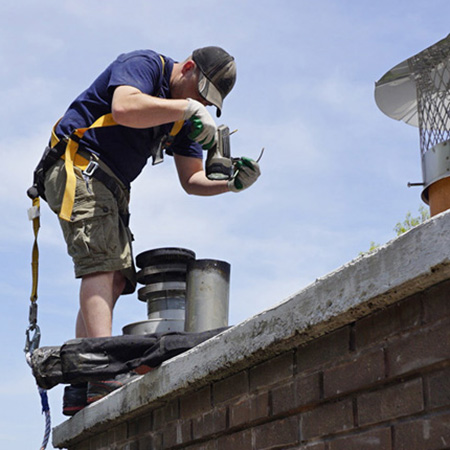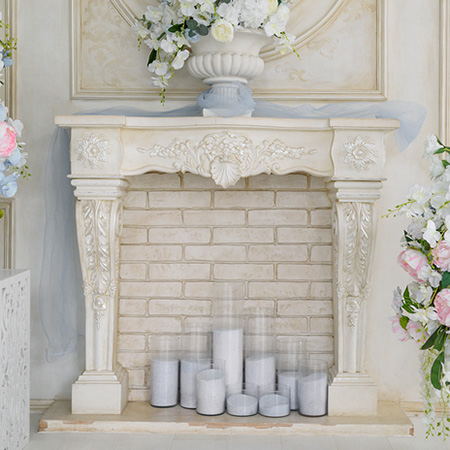Do Unused Chimneys Need Ventilation?
 A chimney is vulnerable to moisture, whether or not the heating appliance it’s connected to is in operation. If you’re going to retire your chimney, air flow is needed, along with ongoing efforts to protect it from moisture intrusion. Annual chimney inspections are recommended even for a retired chimney because certified chimney sweeps have the training to recognize signs that moisture is getting into a chimney system. When moisture problems are ignored, many costly problems can arise.
A chimney is vulnerable to moisture, whether or not the heating appliance it’s connected to is in operation. If you’re going to retire your chimney, air flow is needed, along with ongoing efforts to protect it from moisture intrusion. Annual chimney inspections are recommended even for a retired chimney because certified chimney sweeps have the training to recognize signs that moisture is getting into a chimney system. When moisture problems are ignored, many costly problems can arise.
How to Seal a Chimney While Letting It Breathe
A chimney must be able to breathe, even if it no longer functions. If you were to seal your chimney on both ends, moisture would get trapped inside, accelerating the deterioration of the chimney structure. In addition, moisture could cause damage in the rooms below and where the chimney passes through the loft area, which is referred to as the “chimney breast.” You can safely seal your chimney at the top or bottom, to allow a flow of air that helps to prevent moisture problems.
If you have a damper near the firebox, you can seal the chimney with insulation or any of a number of other solutions. Many chimney exerts recommend Roxul, which is a mineral wool insulation; the benefit of this product is that it is hydrophobic—meaning if it ever gets wet, it will dry out.
If there is a damper at the top of your chimney, close it securely and allow the rest of the chimney to remain open.
For wood stoves connected to a retired chimney, there is usually a hole where the stove’s flue connects to the chimney through the wall—this is called the “thimble.” To retire the chimney, fill the thimble with mortar and some brick and then leave the top part of the chimney open, for ventilation purposes.
A Retired Chimney Needs a Chimney Cap
All chimneys, retired or not, should have a chimney cap with mesh, to keep out rain, snow, animals, leaves, and other debris. If you get a chimney cap made of galvanized steel, it will rust much more quickly and is likely to cause unsightly rust stains on your chimney and possibly the roof. Stainless steel chimney caps are a better investment. Though they cost more upfront, they last far longer and never rust.
 Another Option for an Out-of-Use Chimney
Another Option for an Out-of-Use Chimney
In many old houses, extreme measures have been used to prevent problems caused by an unused chimney. The front of the fireplace is bricked over and the chimney top is torn down, followed by re-roofing over the former chimney area. This approach may not be an improvement over sealing the chimney on one end, however.
Visit Dubuque Fireplace & Heating
Our chimney professionals at Dubuque Fireplace & Heating can help homeowners when closing a chimney or when in need of chimney cleaning, chimney inspections, masonry repair, tuckpointing, and any other chimney services. Visit our superstore, if you are in the market for a new heating appliance. You can see a wide range of options firsthand. Call or stop by today.
Dubuque Fireplace & Patio
925 Century Drive, Dubuque, Iowa
Phone – (563) 582-5156
Chimney Specialists Inc.
869 Main Street, Highland, WI
Phone – (608) 929-4887 / Toll Free (800) 395-6660


 (563) 582-5156
(563) 582-5156


